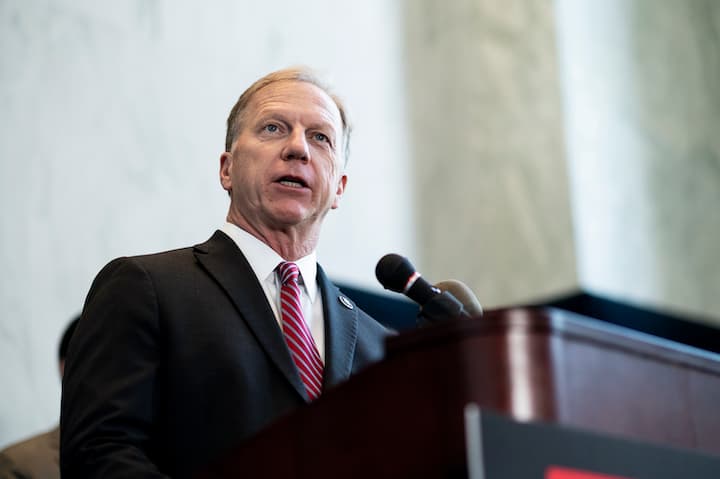
Budget & Tax
Mike Brake | October 2, 2021
Hern rips Biden giveaway to ‘activist-journalists’
Mike Brake
Buried within the various spending proposals being floated by the Biden administration and congressional Democrats is one that would allocate $1.3 billion to provide federal subsidies for newspapers.
The proposal would give local newspapers tax credits for every journalist they employ. The publishers could then apply that credit to the employer’s share of Medicare payroll taxes due for those workers. If any dollars are left over, the IRS would send a refund check to the newspaper.
The initial version of the proposal set an annual tax credit of $25,000 per journalist, decreasing to $15,000 in subsequent years. A later version in the rapidly evolving bill would grant quarterly tax credits up to $12,500 per reporter, up to a maximum of $50,000 annually.
The subsidy would be limited to local newspapers with no more than 750 employees and which have on staff at least one reporter involved in local news coverage—making it available to almost every newspaper in America. The provision, added to the Biden spending bill in the House Ways and Means Committee, is the direct offspring of a previous proposal in 2020, the Local Journalism Sustainability Act, which failed to win passage.
“It’s one of the dumber proposals I’ve seen included in an already monstrous piece of legislation,” said Congressman Kevin Hern (R-Okla.), who serves on the Ways and Means Committee. “There’s more important work to be done than giving the Democrats’ activist-journalists a tax break.”
Hern was joined by Wisconsin Sen. Ron Johnson who was quoted as raising perhaps the biggest objection to the proposal, the incestuous relationship it would create between government and the organizations charged with covering it.
Johnson called the idea “a dangerous precedent of government collusion with the media.”
Newspaper readers are equally concerned with the idea of federal subsidies for media outlets. A Rasmussen survey this week showed only 19 percent favorable to the idea, with 54 percent opposed.
The idea of government subsidies for media is not a new one. The late Steve Buttry, a professor of mass communications at Louisiana State University, cited such proposals in 2010 when he listed “five reasons why government shouldn’t subsidize journalism.” Those reasons included “Journalists must be watchdogs and no dog bites the hand that feeds it” and “If government funds, government will regulate.”
Our neighbors to the north in Canada have already tried newspaper subsidies, and they do not seem to have been effective in stemming the steady erosion of newspaper subscriptions and readership.
In 2020, Canada created the Local Journalism Initiative, which was to run for five years and grant subsidies to nearly 100 newspapers to allow them to hire new reporters. Steve Nixon, executive director of the Saskatchewan Weekly Newspapers Association, was quoted in Canadian media as being lukewarm to the program.
“I wish we didn’t need to do things like this,” he said. “I would prefer that the government stayed out of the journalism business just for the fear of maybe influence or public perception of influence.”
Canadian television and radio broadcasters were also critical, largely because they were left out of the program.
It remains to be seen if the proposal in the Biden spending package makes it all the way to becoming law.
Mike Brake
Independent Journalist
Mike Brake is a journalist and writer who recently authored a centennial history of Putnam City Schools. A former reporter at The Oklahoman (his coverage of the moon landing earned a front-page byline on July 21, 1969), he served as chief writer for Gov. Frank Keating and for Lt. Gov. and Congresswoman Mary Fallin. He has also served as an adjunct instructor at OSU-OKC, and currently serves as public information officer for Oklahoma County Commissioner Brian Maughan.